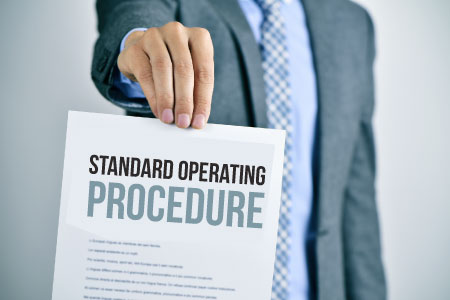From square footage and airlocks to the quantity of HEPA filters and low air returns, there are numerous elements to consider when constructing a cleanroom that complies with ISO 14644-1 standards and ISO 14644-2 standards. But noncompliance isn’t exactly an option, especially when the risk of cleanroom contamination can cause expensive product recalls and production shutdowns.
What’s more: You have to juggle not only ISO 14644-1/2 standards but also requirements of the U.S. Food and Drug Administration (FDA) and European Union (EU), compliance expert Ajit Basrur explain, in his webinar “Update on ISO and Regulatory Requirements for Cleanroom Compliance.” All these rules present serious compliance challenges for even the most diligent manufacturers and cleanroom managers.
Understand the 9 ISO Classes
What it is: The International Organization for Standardization (ISO) defines a cleanroom as a “room within which the number concentration of airborne particles is controlled and classified, and which is designed, constructed, and operated in a manner to control the introduction, generation, and retention of particles inside the room.”
Under ISO 14644-1 standards and ISO 14644-2 standards, cleanrooms fall into one of several classification categories (ISO 1 through ISO 9), with ISO 1 being the cleanest classification. The standards specify the maximum particles allowed for each class. Clean Air Technology, Inc. provides the following table to illustrate ISO 14644-1 cleanroom standards:
| Class | Maximum particles/m³ | |||||
| >=0.1 µm | >=0.2 µm | >=0.3 µm | >=0.5 µm | >=1 µm | >=5 µm | |
| ISO 1 | 10 | 2 | ||||
| ISO 2 | 100 | 24 | 10 | 4 | ||
| ISO 3 | 1,000 | 237 | 102 | 35 | 8 | |
| ISO 4 | 10,000 | 2,370 | 1,020 | 352 | 83 | |
| ISO 5 | 100,000 | 23,700 | 10,200 | 3,520 | 832 | 29 |
| ISO 6 | 1,000,000 | 237,000 | 102,000 | 35,200 | 8,320 | 293 |
| ISO 7 | 352,000 | 83,200 | 2,930 | |||
| ISO 8 | 3,520,000 | 832,000 | 29,300 | |||
| ISO 9 | 35,200,000 | 8,320,000 | 293,000 | |||
Bottom line: A cleanroom’s class depends on the concentration of particles of various sizes ranging from 0.1 microns to 5 microns, according to Charles Lipeles of MECART. And the specific classification you want to achieve will heavily influence the design and layout of your cleanroom.
Consider Space & HVAC Needs
When planning your space, keep in mind how the classification will affect the layout. For instance, you can enter an ISO 8 cleanroom directly from an uncontrolled environment, but you’ll need at least one airlock before entering an ISO 6 environment, Lipeles explained.
Essential: That’s why you must allow for enough square footage to achieve the cleanroom class you have in mind – not just for the clean zone itself, but also for the airlocks/gowning room.
Also, take any planned cleanroom upgrades step by careful step. MECART’s rule of thumb is that you should not skip over more than one class when you move towards a cleaner room. In other words, if your current room is classified as ISO 7, aim for an ISO 6 next—don’t jump to an ISO 5 or 4.
In addition to square footage and layout, the other big consideration is the HVAC system. To meet ISO 14644-1/2 standards and the cleanroom class you desire, Lipeles recommends you follow these requirements:
- Air changes per hour (ACH) – depending on the ISO class, the ACH requirement may range from 10 to 250 or more;
- Air flow cubic feet per minute (CFM) – once you determine the ACH you need and the size of each classified room, you can compute the approximate air flow;
- HEPA filters – the cleaner the room class, the larger number of HEPA filters you’ll need;
- Low air returns – generally, you’ll need the same number of low air returns as HEPA filters; and
- Pressurization – most cleanrooms are held in positive pressure, except when dealing with hazardous products which must use negative pressure.
Design Is Step One
Not done yet: Remember that once you’ve completed the cleanroom, you will need to execute testing and certification (sometimes annually)—conducted by an independent testing agency and using the ISO standards, Production Automation Corporation explains.
Key takeaway: Your cleanroom compliance hinges on your knowledge of the standards, classification, operation, validation, proper design, and continual certification, Basrur stresses. Make sure you’re current on the recently revised ISO 14644-1 standards and ISO 14644-2 standards—so you can avoid costly contaminations while maintaining compliance.

